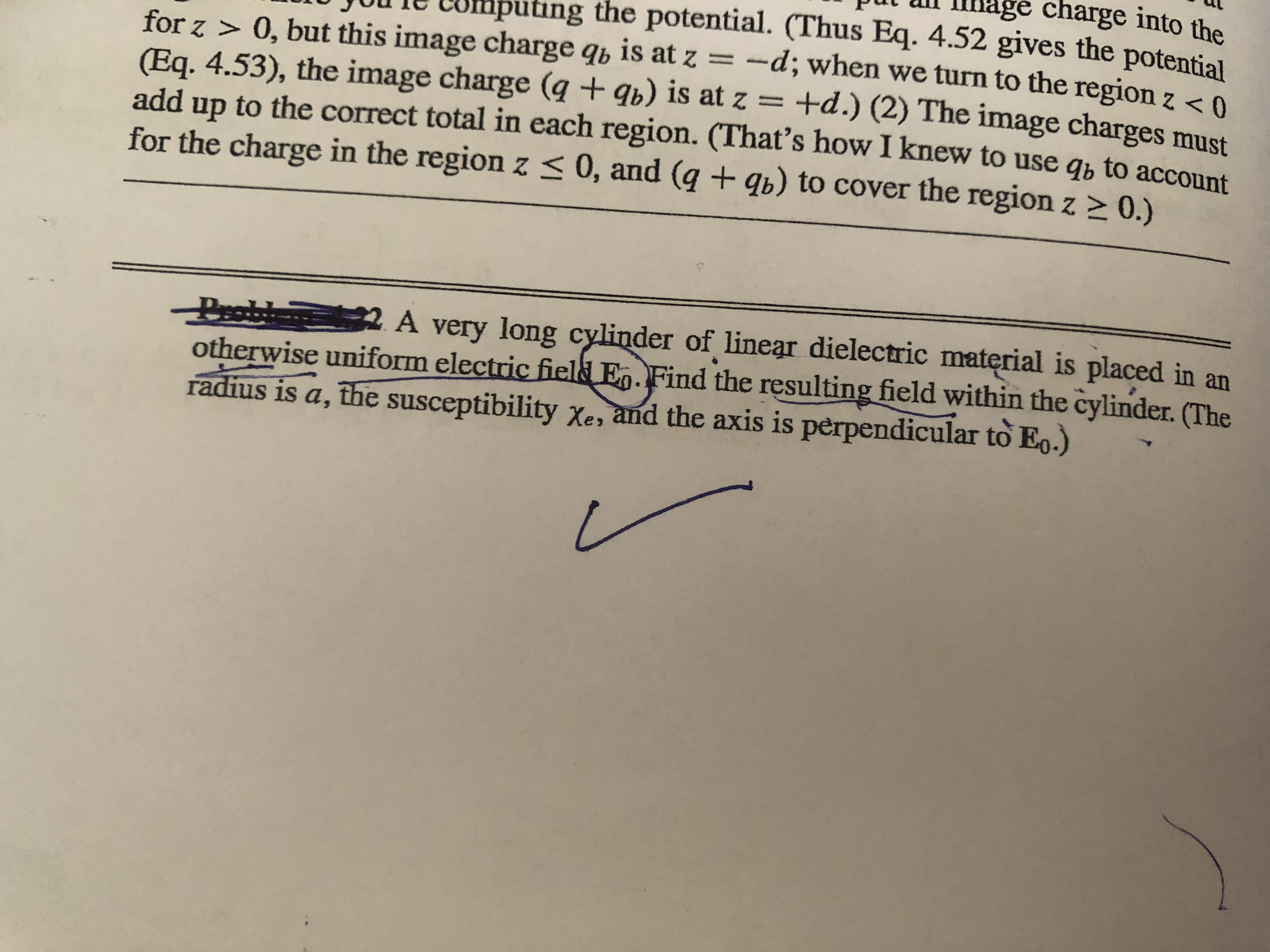Question

Transcribed Image Text:Pesblei C2 A very long cylinder of linear dielectric material is placed in an
otherwise uniform electric fiel& Eo. Find the resulting field within the cylinder. (The
radius is a, the susceptibility Xe, and the axis is perpendicular to Eo.)
Expert Solution
This question has been solved!
Explore an expertly crafted, step-by-step solution for a thorough understanding of key concepts.
This is a popular solution
Trending nowThis is a popular solution!
Step by stepSolved in 5 steps with 9 images

Knowledge Booster
Similar questions
- I only need help with question c. Please help. thanksarrow_forwardHW Q.7 Two insulating, infinite flat plates are parallel and a distance d apart. The charge densities on the plates are +σ and -σ. A charged particle of mass 15 grams and ?=1.6?10−12?hangs from a thread at 60 degrees from the vertical. What are the charge densities on the plates?arrow_forwardWhat is the y (vertical) component of the force exerted on charge qc by charges qa and qb?arrow_forward
- 1. A charge Q, located at the origin in free space produces a field for which Ez = 1.5 kV/m at point P (-2, 1, -1). а. Find Qo b. Find E at M(2, 3, 5) С. Find E at M(2, 3, 5) in cylindrical coordinatesarrow_forwardThe uniformly charged straight wire in the figure has the length I, Find the field at point P, a perpendicular distance x from 0, if lambda (λ) is the charge per unit length. Express your answer in terms of , I, x, and appropriate constants. y 0 \r² = (x^² + y²) ² X P dEy dE dEarrow_forward
arrow_back_ios
arrow_forward_ios